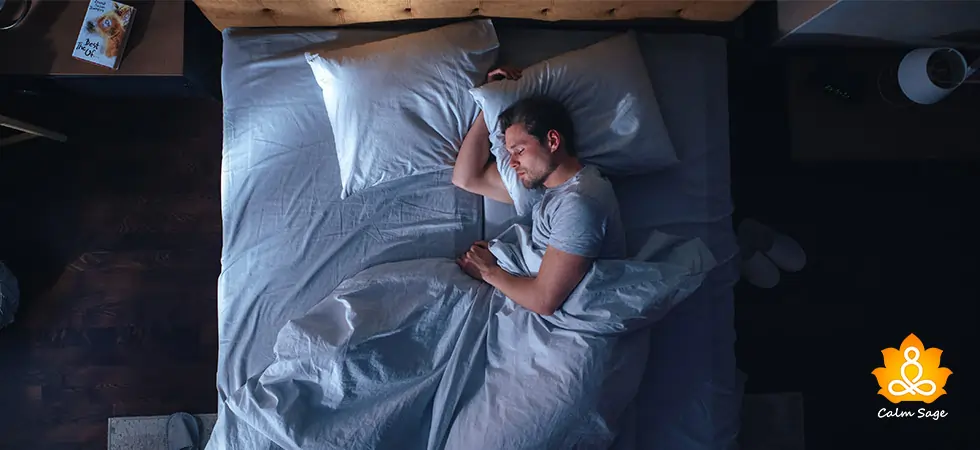Hit That Snooze Button! These Are The Psychological Benefits Of Napping

Being tired is nothing new. With thousands of different thoughts and worries floating around in your mind, it’s understandable if you don’t get enough sleep the night before. Our mind, to catch up on sleep, urges us to take a quick nap. Throw in the after-effects of the pandemic, our sleep schedules have taken a hit.
To compensate for the lack of sleep, a power nap sounds like a good alternative, don’t they? Well, not only in theory but in reality as well, a quick snooze can have a lot of psychological benefits.
However, the key is understanding the nap time that will work in your favor rather than against you. In this blog, I’ll be helping you rediscover the psychological benefits of napping, the side effects, how long should a nap be for adults (vs. kids), and how you can take a quick nap without disturbing your sleep.
Let’s begin!
Sleep Vs. Nap: What’s The Difference?

A nap is a quick rest you take during the day. When you close your eyes for a rest, in the first 10-20 minutes you slip into the first and second stages of Non-REM sleep. A nap is a great way to take a quick break and re-energize your body.
A nap aims to help you recharge without disrupting your regular sleep schedule. When you sleep, your body slips into REM sleep which means completing all the five stages of the sleep cycle. When you’re sleeping (not to be confused with napping), your brain is less responsive to external stimuli.
Did you know that naps can be categorized too? The types of naps can include:
- Recovery nap: When you’re in sleep debt and need to recover from the lack of sleep.
- Prophylactic nap: When you take a quick nap to prevent feeling sleepy or groggy while working.
- Appetitive nap: When you take a nap just for the pleasure of it. This type of nap is relaxing and can improve your mood.
- Fulfillment nap: More common in children, this type of nap is when a child is put to sleep during the day to fulfill sleep needs.
- Essential nap: When you need a quick rest while struggling with an illness. This nap helps your body and immune system fight the infection and advance healing.
The Psychological Benefits Of Napping
1.Better Cognitive Function
Taking a quick nap can help you energize and stay alert. Taking a power nap during the day can help improve your cognitive function as it reduces the levels of adenosine in the brain, a neurotransmitter that encourages sleep.
2.Better Memory Retention
Naps can also help promote memory retention. When you take a quick nap, you increase the chance of retaining what you just learned. Naps can also help your learning skills and focus. Even if you want to recall specific experiences, a nap can come in handy.
3.Better Immunity
Napping has also been proven to help promote immunity. Sleep deprivation can reduce your immunity and taking a nap during the day to cover sleep deprivation can help improve your immune system. Naps are also found helpful in reducing levels of norepinephrine, a stress hormone.
4.Better Performance
Taking a quick nap (between 10-30 minutes) can help you improve your performance and boost your productivity. Naps during the day can improve your psychomotor speed and reaction time, and can help you stay alert.
5.Better Mood
When you nap during the day, it improves your mood and energy levels. If you’ve ever experienced an afternoon slump, then a quick nap can be a good option. Not only this, but a nap can help increase positivity and better tolerance for uncomfortable emotions. If you want to feel less tired and irritable, a quick nap is a good choice.
Are There Any Side Effects Of Napping?
While taking a quick nap can have numerous psychological benefits, it can have some side effects as well. When you nap for more than 20 minutes, it can cause sleep inertia leaving you feeling groggy and confused. If you’re sleep-deprived then these symptoms can be severe and last longer than other symptoms.
Napping during the day (especially when it exceeds the 20-minute mark) can make it harder for you to get a good night’s rest. If you’re struggling with insomnia, then this can be even worse.
How Long Should A Nap Be?

A 10-20 minute nap during the day can make you feel alert and refreshed, however, if you exceed this mark, then it can leave you feeling sluggish, fatigued, and confused. The only exception to this is when you’re sleep-deprived. A sleep-deprived person needs at least a 90-minute nap to complete their sleep cycle and repay the sleep debt.
Longer daytime naps can also disrupt your regular sleep schedule. At the very least, a 90-minute nap is good to complete the sleep cycle, when you’re struggling to get enough sleep.
Of course, adults and children need different sleep and nap schedules. Here are some recommendations for the nap times for adults and children:
- 0-6 months: a 30-minute (every 2 hours) nap two to three times a day
- 6-12 months: a 20-minute nap every few hours, at least two times a day
- Toddlers: a 1-3 hour nap every afternoon
- Pre-teens: a nap is not necessary but it is recommended that a child gets at least 10-11 hours of sleep
- Teenagers: Same as pre-teens, a nap is not necessary, but it is recommended that the child gets at least 9 hours of sleep
- Adults: Adults may not necessarily need a nap but they can still benefit from a 10-20 minute rest. A sleep-deprived adult can benefit from a 90-minute to 110-minute nap.
How To Take A Nap?
If you need a daytime nap, here are some tips to help you out:
- Timing Is Important: Make sure your naptime is set between 1-3 pm. These hours are good as they are neither too early nor too late in the afternoon. If you sleep later, you’ll have trouble sleeping at night.
- Set Your Environment: Just like a sleep environment is important, the nap environment is also important. Make sure the room is dark, cool, and devoid of external noise. You can use an eye mask or white noise to further help you.
- Avoid The Bed: If you’re taking a power nap, it is recommended that you nap on a couch or a daybed instead of your bed. This will make sure that you don’t become too comfortable and extend your naptime.
- Take A Coffee Nap :Drink a cup of coffee before you take a nap. This will ensure that when you wake, you’re refreshed. This way, the caffeine will kick in upon waking and will make you feel alert and refreshed.
- Set An Alarm: Setting an alarm can be a good choice as it ensures you don’t extend your naptime. Choose an alarm tone that slowly builds up and doesn’t startle you out of your nap.
Nap Like A Pro!
A nap in the afternoon might sound like a luxury but remember that a 10-minute nap can bring many benefits including an improved mood, lower stress levels, improved performance, and better cognitive performance. Naps can also make you feel alert and productive.
Make sure you don’t exceed your naptime more than 20-minutes, keep your sleep environment calm and cool, set an alarm, and get the rest your body needs. A quick nap will help you feel energized and alert in no time. Just follow the above steps and nap like a pro!
I hope this blog helped you understand the psychological benefits of napping, how long a nap should be, and how you can take a nap. For more, you can write to us at info@calmsage.com or DM us on social media.
You can also share your thoughts (and tricks to have a power nap) in the comments below!
Take Care!




















